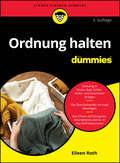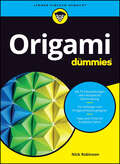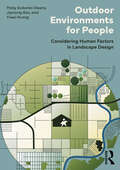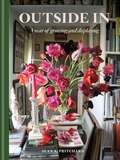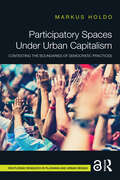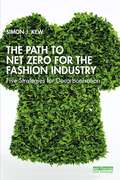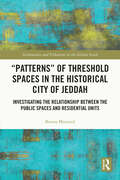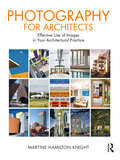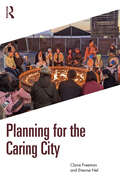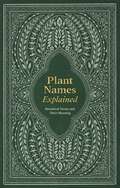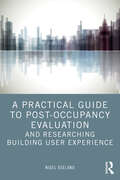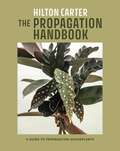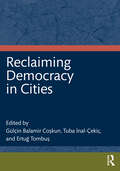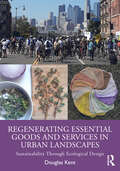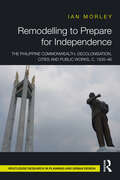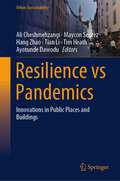- Table View
- List View
Ordnung halten für Dummies (Für Dummies)
by Eileen RothDamit Tohuwabohu ein Fremdwort bleibt Haben Sie es satt, ewig Ihren Schlüssel zu suchen und ihn später im Kühlschrank wiederzufinden? Ordnung halten: Dem einen ist es einfach gegeben, die anderen müssen es mühsam lernen. Eileen Roth zeigt Ihnen, wie Sie Ihr Zuhause ordentlich halten und Ihren Arbeitsplatz effizient gestalten. Außerdem erfahren Sie, wie Sie Ihre Daten auf Computer, Smartphone und Co. ordnen und Ihren Urlaub so planen, dass Sie richtig entspannen. Wenn Sie gut organisiert sind, haben Sie weniger Arbeit, weniger Stress, mehr Freizeit und mehr Entspannung. Mithilfe dieses Buches finden Sie immer, was Sie suchen Sie erfahren Welche Hilfsmittel Ihnen beim Ordnen helfen Was Sie aufheben sollten und was nicht Welche grundlegenden Techniken es für das Zeitmanagement gibt Wie Sie das Chaos mit System beseitigen
Origami für Dummies (Für Dummies)
by Nick RobinsonMehr als nur Papiertiger Wollten Sie schon immer die uralte Kunst des Origami meistern? Dann ist dieses Buch genau das Richtige für Sie. Verständliche Schritt-für-Schritt-Anleitungen, bestehend aus Abbildungen und begleitendem Text, helfen Ihnen dabei, ein langweiliges Stück Papier in die verschiedensten Origami-Modelle zu verwandeln. Egal ob Anfänger oder Fortgeschrittener - für jeden ist das richtige dabei. Dabei gibt der Autor auch allgemeine Tipps zur perfekten Faltung, zum Erstellen eigener Modelle und verrät, was zu tun ist, wenn Sie mal nicht weiterwissen. So werden auch Sie zum Origami-Meister. Sie erfahren Wie Sie Grundformen falten und Papier einteilen Wie Sie neue Origami-Modelle entwerfen Wie Sie auch knifflige Modelle meistern Wie Sie mithilfe von Origami Spinnen lebend aus Ihrer Wohnung entfernen
Outdoor Environments for People: Considering Human Factors in Landscape Design
by Patsy Eubanks Owens Jayoung Koo Yiwei HuangOutdoor Environments for People addresses the everyday human behavior in outdoor built environments and explains how designers can learn about and incorporate their knowledge into places they help to create. Bridging research and practice, and drawing from disciplines such as environmental psychology, cultural geography, and sociology, the book provides an overview of theories, such as personal space, territoriality, privacy, and place attachment, that are explored in the context of outdoor environments and, in particular, the landscape architecture profession. Authors share the impact that place design can have on individuals and communities with regard to health, safety, and belonging. Beautifully designed and highly illustrated in full color, this book presents analysis, community engagement, and design processes for understanding and incorporating the social and psychological influences of an environment and discusses examples of outdoor place design that skillfully respond to human factors. As a textbook for landscape architecture students and a reference for practitioners, it includes chapters addressing different realms of people–place relationships, examples of theoretical applications, case studies, and exercises that can be incorporated into any number of design courses. Contemporary design examples, organized by place type and illustrating key human factor principles, provide valuable guidance and suggestions. Outdoor Environments for People is a must-have resource for students, instructors, and professionals within landscape architecture and the surrounding disciplines.
Outdoor Environments for People: Considering Human Factors in Landscape Design
by Patsy Eubanks Owens Jayoung Koo Yiwei HuangOutdoor Environments for People addresses the everyday human behavior in outdoor built environments and explains how designers can learn about and incorporate their knowledge into places they help to create. Bridging research and practice, and drawing from disciplines such as environmental psychology, cultural geography, and sociology, the book provides an overview of theories, such as personal space, territoriality, privacy, and place attachment, that are explored in the context of outdoor environments and, in particular, the landscape architecture profession. Authors share the impact that place design can have on individuals and communities with regard to health, safety, and belonging. Beautifully designed and highly illustrated in full color, this book presents analysis, community engagement, and design processes for understanding and incorporating the social and psychological influences of an environment and discusses examples of outdoor place design that skillfully respond to human factors. As a textbook for landscape architecture students and a reference for practitioners, it includes chapters addressing different realms of people–place relationships, examples of theoretical applications, case studies, and exercises that can be incorporated into any number of design courses. Contemporary design examples, organized by place type and illustrating key human factor principles, provide valuable guidance and suggestions. Outdoor Environments for People is a must-have resource for students, instructors, and professionals within landscape architecture and the surrounding disciplines.
Outside In: A Year of Growing & Displaying
by Sean A Pritchard'Inventive, considered, and thoughtful design.' House & GardenIn his debut book, garden designer Sean A Pritchard shows you how to plan a garden so that every month of the year there's something to bring indoors and display in an engaging way. From the cheery joy of early spring daffodils to the velvety richness of late-summer dahlias, the deep glow of golden autumn leaves to the optimism of late-winter catkins, Sean explains how to grow, harvest, and arrange an abundance of nature's treasure - no matter the size of your plot or your level of horticultural experience.
Participatory Spaces Under Urban Capitalism: Contesting the Boundaries of Democratic Practices (Routledge Research In Planning And Urban Design Ser.)
by Markus HoldoCan people use new participatory spaces to reclaim their rights as citizens and challenge structures of political power? This book carefully examines the constraints and possibilities for participatory governance under capitalism. To understand what is at stake in the politics of participation, we need to look beyond the values commonly associated with it. Citizens face a dilemma: should they participate, even if this helps to sustain an unjust system, or not participate, thereby turning down rare opportunities to make a difference? By examining the rationale behind democratic innovation and the reasons people have for getting involved, this book provides a theory of how citizens can use new democratic spaces to challenge political boundaries. Connecting numerous international case studies and presenting original research from Rosario, Argentina, this book offers a crucial corrective to previous research. What matters most is not the design of new models of participation nor is it the supposed radical imagination of political leaders. It is whether people use new spaces for participation to renegotiate what democracy means in practice. Bridging critical urban studies and democratic theory, this book will be of interest to researchers and students in the fields of democratic innovations, political economy and urban planning. It will also provide activists and practitioners of participatory democracy with important tools to expand spaces of grassroots democracy.
Participatory Spaces Under Urban Capitalism: Contesting the Boundaries of Democratic Practices (Routledge Research In Planning And Urban Design Ser.)
by Markus HoldoCan people use new participatory spaces to reclaim their rights as citizens and challenge structures of political power? This book carefully examines the constraints and possibilities for participatory governance under capitalism. To understand what is at stake in the politics of participation, we need to look beyond the values commonly associated with it. Citizens face a dilemma: should they participate, even if this helps to sustain an unjust system, or not participate, thereby turning down rare opportunities to make a difference? By examining the rationale behind democratic innovation and the reasons people have for getting involved, this book provides a theory of how citizens can use new democratic spaces to challenge political boundaries. Connecting numerous international case studies and presenting original research from Rosario, Argentina, this book offers a crucial corrective to previous research. What matters most is not the design of new models of participation nor is it the supposed radical imagination of political leaders. It is whether people use new spaces for participation to renegotiate what democracy means in practice. Bridging critical urban studies and democratic theory, this book will be of interest to researchers and students in the fields of democratic innovations, political economy and urban planning. It will also provide activists and practitioners of participatory democracy with important tools to expand spaces of grassroots democracy.
The Path to Net Zero for the Fashion Industry: Five Strategies for Decarbonisation
by Simon J. KewThis book uses a quantitative science-based approach to explain where the greenhouse gas (GHG) emissions emitted by the fashion industry are generated and it explores what strategies can be deployed to achieve Net Zero by 2050. With GHG emissions currently predicted to triple by the middle of the century, the fashion industry is far off course to reach Net Zero, as set out in the Paris Agreement. With misinformation and greenwashing representing an ever-growing barrier to potential solutions, the book aims to demystify the source of GHG emissions from the industry, breaking down in detail their origin, while identifying the steps that can be taken when designing and sourcing new products. Detailing the market drivers and trends in fashion consumption, it argues that change should be guided by science-based quantitative principles. Accessibly written with key insights at the end of each chapter, this book will enable the reader to understand the tactics to tackle decarbonisation, and ultimately outline five main strategies that can be deployed by the fashion and textile industries to align with the Paris Agreement. This book serves as a practical guide for designers, buyers and the fashion industry in general to develop and understand approaches and strategies to reduce energy consumption and the resulting GHG emissions to reach Net Zero.
The Path to Net Zero for the Fashion Industry: Five Strategies for Decarbonisation
by Simon J. KewThis book uses a quantitative science-based approach to explain where the greenhouse gas (GHG) emissions emitted by the fashion industry are generated and it explores what strategies can be deployed to achieve Net Zero by 2050. With GHG emissions currently predicted to triple by the middle of the century, the fashion industry is far off course to reach Net Zero, as set out in the Paris Agreement. With misinformation and greenwashing representing an ever-growing barrier to potential solutions, the book aims to demystify the source of GHG emissions from the industry, breaking down in detail their origin, while identifying the steps that can be taken when designing and sourcing new products. Detailing the market drivers and trends in fashion consumption, it argues that change should be guided by science-based quantitative principles. Accessibly written with key insights at the end of each chapter, this book will enable the reader to understand the tactics to tackle decarbonisation, and ultimately outline five main strategies that can be deployed by the fashion and textile industries to align with the Paris Agreement. This book serves as a practical guide for designers, buyers and the fashion industry in general to develop and understand approaches and strategies to reduce energy consumption and the resulting GHG emissions to reach Net Zero.
“Patterns” of Threshold Spaces in the Historical City of Jeddah: Investigating the Relationship Between the Public Spaces and Residential Units (Architecture and Urbanism in the Global South)
by Basma Massoud“Patterns” of Threshold Spaces in the Historical City of Jeddah explores the meaning of threshold spaces and investigates the relationship between the public spaces and residential units in the historical city of Jeddah, Saudi Arabia, while at the same time revisiting Christopher Alexander’s theory in his canonical 1977 book, A Pattern Language. This book questions and analyses “patterns” relating to the cultural, social, and environmental particularities of Jeddah, with special attention paid to the effect of gender segregation in the city’s urban configuration. It discusses the extension that has been undertaken through testing a concept from the urban design theory of the West (the United States and Canada) and applying it to an Islamic city to find patterns in four different scales, which form the basis of the investigation (body, building, street, and city). Empirical methods have been used in the context of historical Jeddah, through which patterns are investigated using different approaches for the different scales. The book aims to explore the meaning of threshold spaces in old Jeddah. Furthermore, it shows that there are eighteen patterns of threshold spaces in the old town: patterns that are solely related to this specific case study, as well as modified patterns to the ones explored by Christopher Alexander. This book shall allow not only a better understanding of the relationship between housing and the historical city but also an exploration of the role of the threshold space in shaping the old city of Jeddah. It will be of interest to researchers, students of architecture, urban planning and anthropology studies, and people involved in cultural heritage, both academics and practitioners.
“Patterns” of Threshold Spaces in the Historical City of Jeddah: Investigating the Relationship Between the Public Spaces and Residential Units (Architecture and Urbanism in the Global South)
by Basma Massoud“Patterns” of Threshold Spaces in the Historical City of Jeddah explores the meaning of threshold spaces and investigates the relationship between the public spaces and residential units in the historical city of Jeddah, Saudi Arabia, while at the same time revisiting Christopher Alexander’s theory in his canonical 1977 book, A Pattern Language. This book questions and analyses “patterns” relating to the cultural, social, and environmental particularities of Jeddah, with special attention paid to the effect of gender segregation in the city’s urban configuration. It discusses the extension that has been undertaken through testing a concept from the urban design theory of the West (the United States and Canada) and applying it to an Islamic city to find patterns in four different scales, which form the basis of the investigation (body, building, street, and city). Empirical methods have been used in the context of historical Jeddah, through which patterns are investigated using different approaches for the different scales. The book aims to explore the meaning of threshold spaces in old Jeddah. Furthermore, it shows that there are eighteen patterns of threshold spaces in the old town: patterns that are solely related to this specific case study, as well as modified patterns to the ones explored by Christopher Alexander. This book shall allow not only a better understanding of the relationship between housing and the historical city but also an exploration of the role of the threshold space in shaping the old city of Jeddah. It will be of interest to researchers, students of architecture, urban planning and anthropology studies, and people involved in cultural heritage, both academics and practitioners.
Photography for Architects: Effective Use of Images in Your Architectural Practice
by Martine Hamilton Knight***Shortlisted for the Architectural Book Awards 2024***We live in a world driven by images, but with so much visual noise, is anyone really looking? How does an architect ensure their portfolio is within view of the right audience? Photographs are still as vital to architectural practice as they ever were. However, creation and circulation, once in the hands of skilled professionals, is now perceived as being ‘free’ and within easy reach of all. But where is the clarity? What is the message? By setting out the case for curated image making, considered photography may again be placed at the centre of architectural marketing strategies.Photography for Architects guides the reader through various topics: from establishing a visual brand and sharing images online, to producing content in-house and commissioning professionals. It explores the still and moving image, creating books and exhibitions for legacy value, compiling award entries, and engaging with trade press. Little understood aspects regarding legal rights and obligations, ethics, copyright, and licensing images for use are discussed in clear language. Multiple photographic examples and conversations with international practitioners highlight the various themes throughout.Written by a working architectural photographer whose life has been spent in commercial practice, this easy-to-read, richly illustrated guide is essential reading for architects and designers alike who are working with images and image makers.
Planning for the Caring City
by Claire Freeman Etienne NelAs the world has become increasingly urbanised and planetary well-being ever more threatened, questions have emerged over just what the priorities should be for how we live in cities. Clearly for many the current ways of planning and managing city environments are not working, given so many of their human and non-human inhabitants struggle on a daily basis to maintain their well-being and survival. Different approaches to city development are crucial if they are to be inclusive places where all can thrive. Ensuring that cities are safe and sustainable and provide a level of care for all their residents places a significant mandate on those who manage cities and on planners in particular. This book examines all the parts of the city where care needs to be incorporated, how we plan, create nurturing environments, include all who live there, build sensitively, support meaningful livelihoods, and enable compassionate governance. With planners in mind this book examines why care is needed in the urban environment, and drawing on real world examples examines how it can be applied in an effective and empowering fashion.
Planning for the Caring City
by Claire Freeman Etienne NelAs the world has become increasingly urbanised and planetary well-being ever more threatened, questions have emerged over just what the priorities should be for how we live in cities. Clearly for many the current ways of planning and managing city environments are not working, given so many of their human and non-human inhabitants struggle on a daily basis to maintain their well-being and survival. Different approaches to city development are crucial if they are to be inclusive places where all can thrive. Ensuring that cities are safe and sustainable and provide a level of care for all their residents places a significant mandate on those who manage cities and on planners in particular. This book examines all the parts of the city where care needs to be incorporated, how we plan, create nurturing environments, include all who live there, build sensitively, support meaningful livelihoods, and enable compassionate governance. With planners in mind this book examines why care is needed in the urban environment, and drawing on real world examples examines how it can be applied in an effective and empowering fashion.
Plant Names Explained: Botanical Terms and Their Meaning
by Editors of Editors of David & CharlesIf you, like many gardeners, have a fascination for plant names and their derivations, but stop short of wanting to study botanical nomenclature in great depth, this book is for you!Precise naming is essential to be able to identify plants accurately and most gardeners have at least some knowledge of ‘botanical Latin’. But a plant’s full botanical name does much more than give it a unique label. The name can often tell you where the plant originated, who discovered it, what shape it is, and much else besides. What’s more, the name can be used and understood anywhere in the world.This is a book to have with you at the garden centre, and one to keep beside your bed for an entertaining read. Plant Names Explained is an indispensable guide and makes the subject accessible, enjoyable and fun. It shows not only how plant names work, but also how you can make use of them in entertaining as well as practical ways.A selective alphabetical listing of botanical names and their explanations is accompanied by features exploring cultivar names, with translations of foreign terms and lists of plants you can link with special occasions and celebrations, or with personal names. Other features highlight the places, people and plant characteristics that lie behind the names: gardens and nurseries, countries and cities, plant hunters and gardeners, colours, characteristics and habitats.Plant Names Explained is an essential and fascinating guide to the subject. What may at first seem a dry but necessary convention is revealed to be a way of opening up the intriguing world of plants.
A Practical Guide to Post-Occupancy Evaluation and Researching Building User Experience
by Nigel OselandA Practical Guide to Post-Occupancy Evaluation offers high-level pragmatic guidance and case study examples on how to conduct a Post-Occupancy Evaluation (POE) to determine whether a workplace project is successful and uncover the lessons learned for future projects. For designers, POEs provide essential predesign feedback, informing the design brief to determine occupant requirements and help focus expenditure. For those in charge of a building or buildings, POE offers proactive building management and can also be used as part of the change management programme in larger projects, informing the occupants of progress. The practical guidance offered in this book will help the workplace industry understand if a design meets the requirements of an occupier and measure the success of and value offered by a workplace project.This book will be of interest to professionals in the workplace industry responsible for delivering and evaluating capital projects as well as those studying interior design, architecture, surveying, facilities management and building services engineering.
A Practical Guide to Post-Occupancy Evaluation and Researching Building User Experience
by Nigel OselandA Practical Guide to Post-Occupancy Evaluation offers high-level pragmatic guidance and case study examples on how to conduct a Post-Occupancy Evaluation (POE) to determine whether a workplace project is successful and uncover the lessons learned for future projects. For designers, POEs provide essential predesign feedback, informing the design brief to determine occupant requirements and help focus expenditure. For those in charge of a building or buildings, POE offers proactive building management and can also be used as part of the change management programme in larger projects, informing the occupants of progress. The practical guidance offered in this book will help the workplace industry understand if a design meets the requirements of an occupier and measure the success of and value offered by a workplace project.This book will be of interest to professionals in the workplace industry responsible for delivering and evaluating capital projects as well as those studying interior design, architecture, surveying, facilities management and building services engineering.
The Propagation Handbook: A guide to propagating houseplants
by Hilton CarterIn The Propagation Handbook, plant stylist Hilton Carter reveals how to grow and increase your own plant family by propagating existing plants. Not only a plant lover, Hilton is passionate about propagation, the process of growing a brand new healthy and happy plant from part of an existing one. In this, his fifth book, Hilton talks us through the process of propagating houseplants and explains all the necessary techniques, from the very simplest to more complex methods, such as air layering and grafting. He describes which method to use for different types of plant, and lists essential tools for the process. In Hilton's words: "You hear so much about plant 'parenthood', but knowing how to propagate and then watching as your little plant takes shape and develops into a full-grown plant is the very definition of this."
Reclaiming Democracy in Cities
by Gülçin Balamir Coşkun Tuba İnal-Çekiç Ertuğ TombuşEffective urban governance is essential in responding to the challenges of inequality, migration, public health, housing, security, and climate change. Reclaiming Democracy in Cities frames the city as a political actor in its own right, exploring the city’s potential to develop deliberative and participatory practices which help inform innovative democratic solutions to modern day challenges.Bringing together expertise from an international selection of scholars from various fields, this book begins with three chapters which discuss the theoretical idea of the democratic city and the real-world applicability of such a model. Part II discusses new and innovative democratic practices at the local level and asks in what way these practices help us to rethink democratic politics, institutions, and mechanisms in order to move toward a more egalitarian, pluralist, and inclusive direction. Drawing on the Istanbul municipal elections and the Kurdish municipal experience, Part III focuses on the question of whether cities and local governments can lead to the emergence of strong democratic forces that oppose authoritarian regimes. Finally, Part IV discusses urban solidarity networks and collaborations at both the local level and beyond the nation, questioning whether urban solidarity networks and alliances with civil society or transnational city networks can create alternative ways of thinking about the city as a locus of democracy.This edited volume will appeal to academics, researchers, and advanced students in the fields of urban studies, particularly those with an interest in democratic theory; local democracy; participation and municipalities. It will also be relevant for practitioners of local governments, NGOs, and advocacy groups and activists working for solidarity networks between cities.
Reclaiming Democracy in Cities
Effective urban governance is essential in responding to the challenges of inequality, migration, public health, housing, security, and climate change. Reclaiming Democracy in Cities frames the city as a political actor in its own right, exploring the city’s potential to develop deliberative and participatory practices which help inform innovative democratic solutions to modern day challenges.Bringing together expertise from an international selection of scholars from various fields, this book begins with three chapters which discuss the theoretical idea of the democratic city and the real-world applicability of such a model. Part II discusses new and innovative democratic practices at the local level and asks in what way these practices help us to rethink democratic politics, institutions, and mechanisms in order to move toward a more egalitarian, pluralist, and inclusive direction. Drawing on the Istanbul municipal elections and the Kurdish municipal experience, Part III focuses on the question of whether cities and local governments can lead to the emergence of strong democratic forces that oppose authoritarian regimes. Finally, Part IV discusses urban solidarity networks and collaborations at both the local level and beyond the nation, questioning whether urban solidarity networks and alliances with civil society or transnational city networks can create alternative ways of thinking about the city as a locus of democracy.This edited volume will appeal to academics, researchers, and advanced students in the fields of urban studies, particularly those with an interest in democratic theory; local democracy; participation and municipalities. It will also be relevant for practitioners of local governments, NGOs, and advocacy groups and activists working for solidarity networks between cities.
Regenerating Essential Goods and Services in Urban Landscapes: Sustainability Through Ecological Design
by Douglas KentHow do we provide for and nurture millions of people without destroying the planet in the process? Author Doug Kent, an environmental specialist, believes a vital element in the solution is recognizing that urban landscapes are an essential partner in everyone’s wellbeing. He argues that urban landscapes can and must work harder.Urban landscapes can provide part of our energy needs, help cool our buildings and public spaces, help us make the most of our precious water. They can also help combat air pollution and reduce the likelihood of allergies and asthma. They can provide landscape materials and even contribute to our timber supply. Doug also advocates turning landscapes into a food source, and/or a perfumery, pharmacy, soap shop, or craft store.Doug has over 12 years of research in this book. He has spent years doing literature reviews, and many more years concocting, consuming, crafting, distilling, propagating, retting, sawing, sowing, and weaving its many recommendations. He has also travelled the length and width of California many times to interview the people and businesses already doing this incredible work.Regenerating Essential Goods and Services is not a manifesto. It is a user’s manual. You are the creative and energetic force that will ultimately drive sustainability and regeneration. Let’s go.
Regenerating Essential Goods and Services in Urban Landscapes: Sustainability Through Ecological Design
by Douglas KentHow do we provide for and nurture millions of people without destroying the planet in the process? Author Doug Kent, an environmental specialist, believes a vital element in the solution is recognizing that urban landscapes are an essential partner in everyone’s wellbeing. He argues that urban landscapes can and must work harder.Urban landscapes can provide part of our energy needs, help cool our buildings and public spaces, help us make the most of our precious water. They can also help combat air pollution and reduce the likelihood of allergies and asthma. They can provide landscape materials and even contribute to our timber supply. Doug also advocates turning landscapes into a food source, and/or a perfumery, pharmacy, soap shop, or craft store.Doug has over 12 years of research in this book. He has spent years doing literature reviews, and many more years concocting, consuming, crafting, distilling, propagating, retting, sawing, sowing, and weaving its many recommendations. He has also travelled the length and width of California many times to interview the people and businesses already doing this incredible work.Regenerating Essential Goods and Services is not a manifesto. It is a user’s manual. You are the creative and energetic force that will ultimately drive sustainability and regeneration. Let’s go.
Remodelling to Prepare for Independence: The Philippine Commonwealth, Decolonisation, Cities and Public Works, c. 1935–46
by Ian MorleyRemodelling to Prepare for Independence: The Philippine Commonwealth, Decolonisation, Cities and Public Works, c. 1935–46 illuminates the implications of the USA’s final phase of colonial rule in the Philippine Islands. It explores the Filipino side of decolonisation and the management of the built environment in the years immediately prior to self-rule. This book shakes off the collaboration vs. resistance paradigm that empire histories generally follow and consequently yields an original vantage point to comprehend transition within an Asian society in the years immediately prior to, during, and after World War Two. This will not only deepen insight of the American Empire, but also grants the opportunity to tie Philippine political-cultural change to the global history of urban planning’s advancement. Accordingly, it opens a new window to rethink Filipino ethno-history and societal evolution, alongside the opportunity to compare the Philippines with other nations that undertook planning projects as part of their decolonisation process and early-postcolonial advancement. The book utilises theoretical frames in order to help creatively excavate the era 1935–46 for the purpose of not just revealing what public works occurred, but to also uncover what those projects meant to the Commonwealth Government, the BPW’s staff, and the public who benefitted from public works projects. The book will be relevant to students and researchers of Urban History, Asian and American (Empire) History, and Imperial and Colonial Studies. Architects, planners, and members of the public who are interested in the form and meaning of urban environments designed/constructed in the past will also find the publication to be of great interest.
Remodelling to Prepare for Independence: The Philippine Commonwealth, Decolonisation, Cities and Public Works, c. 1935–46
by Ian MorleyRemodelling to Prepare for Independence: The Philippine Commonwealth, Decolonisation, Cities and Public Works, c. 1935–46 illuminates the implications of the USA’s final phase of colonial rule in the Philippine Islands. It explores the Filipino side of decolonisation and the management of the built environment in the years immediately prior to self-rule. This book shakes off the collaboration vs. resistance paradigm that empire histories generally follow and consequently yields an original vantage point to comprehend transition within an Asian society in the years immediately prior to, during, and after World War Two. This will not only deepen insight of the American Empire, but also grants the opportunity to tie Philippine political-cultural change to the global history of urban planning’s advancement. Accordingly, it opens a new window to rethink Filipino ethno-history and societal evolution, alongside the opportunity to compare the Philippines with other nations that undertook planning projects as part of their decolonisation process and early-postcolonial advancement. The book utilises theoretical frames in order to help creatively excavate the era 1935–46 for the purpose of not just revealing what public works occurred, but to also uncover what those projects meant to the Commonwealth Government, the BPW’s staff, and the public who benefitted from public works projects. The book will be relevant to students and researchers of Urban History, Asian and American (Empire) History, and Imperial and Colonial Studies. Architects, planners, and members of the public who are interested in the form and meaning of urban environments designed/constructed in the past will also find the publication to be of great interest.
Resilience vs Pandemics: Innovations in Public Places and Buildings (Urban Sustainability)
by Ali Cheshmehzangi Maycon Sedrez Hang Zhao Tian Li Tim Heath Ayotunde Dawodu“Resilience vs Pandemics: Innovations in Public Places and Buildings” explores innovative solutions for architecture and public places during and after the pandemic. Additionally, the authors contribute to the documentation of architectural and social transformations that have been prompted by previous transmissible diseases, as this knowledge can inform responses to future pandemics. In this volume, the chapters present critical, exploratory, multi- and interdisciplinary, and cutting-edge research approaches; with a particular focus on the effects of COVID-19 and other highly transmissible diseases on the design, use, performance, and perception of the built environment, particularly at the building scale. This volume aims to organize a collection of scientific studies, reviews, analysis, recommendations, and solutions in the fields of urban design, architecture, design, landscape design, etc. The overarching goal is to document new approaches to create and enhance built environment resilience. Chapters shed light on novel methods, tools, processes, regulations, behaviours, and other relevant details contributing to a comprehensive understanding of this crucial issue. The two scales of the built environment under consideration are: (1) Public Places, including research on transformations (death, emergencies, changes), requirements, adaptability, usability, virtual immersion, historical perspectives, interactivity, shifts in use and programs, etc.(2) Buildings, including regulations, shifts in use and program, non-pharmaceutical interventions, human interactions, and human-machine interfaces. The book covers a wide range of studies, including physical and non-physical studies, which may refer to the city infrastructure, green/blue spaces, housing, policy-making, health services, social and economic issues, etc. The findings and results of various global case study examples contribute to the decision-making of governments, organizations, and institutions, as well as inspire scholars and future research for developing resilience in the post-pandemic era.
